Fingerprints
They say that good ideas never die at Disney. That’s probably true. Even though Discovery Bay never made it into Disneyland Park, the DNA of Discovery Bay fractured and spread across the globe, sewn into projects at various Disney Parks and Resorts around the world. Here are just a few elements that made it.
1) Big Thunder Mountain (1979)
The single element of Discovery Bay to survive was Big Thunder Mountain, which was selected to become the signature ride of Frontierland and the replacement for the Mine Train Thru Nature’s Wonderland. It opened in 1979 – about when Discovery Bay including Big Thunder was meant to be completed. The ride works effortlessly in the existing 1860s dusty frontier town narrative of Frontierland, but placed in the context of Discovery Bay (as it was supposed to be), it feels much more multi-faceted and – somehow – more fun.
As mentioned on the first page of the article, Disneyland’s Big Thunder Mountain even retains the more “fantastical” hoodoo formations and forest setting meant to tie the ride to the more fantasy-oriented Discovery Bay when compared to the expansive, desert-surrounded Monument Valley grandeur of every other Thunder Mountain Disney has created.
It’s an interesting little hint at what was intended for the ride and the larger role it’s meant to play as a shared headliner between Frontierland and Discovery Bay’s narrative.
2) The lost concepts for Epcot’s The Land (1982)
Shortly after he finished work on Discovery Bay and Big Thunder Mountain, Tony was put to work designing The Land pavilion for Epcot. His original plans for The Land set the pavilion inside of a giant tower made of seven glass crystals (check the Discovery Bay concept art if you don’t see the connection there). Most interestingly, Baxter’s plan for The Land’s headlining attraction was a dark ride through the various habitats of the world suspended from the ceiling in hot air balloons.
Epcot visitors will recognize that that’s not what the Land pavilion looks like, and it has no such attraction. That’s because, just as Baxter finished his designs, the pavilion’s sponsor – a logging company – dropped out and was replaced by Kraft Foods. Given their new sponsorship, Kraft requested that the pavilion be reworked to de-emphasize habitats and instead focus on food, nutrition, and farming (which are a far more appropriate fit for Kraft’s sponsorship). So Baxter was sent next door, which brings us to…
3) Professor Marvel (1982)
The kindly, jovial Professor Marvel would’ve led guests on a tour of his Gallery of Wonders with the help of a playful dragon perched on his shoulder. Sound familiar? If not, maybe you just need one little spark to remind you. Yep, when Baxter was moved off of The Land pavilion, he was instead assigned the pavilion next door where sponsor Kodak requested “something imaginative.”
So just a few years after they would’ve appeared in Discovery Bay, the thoughtful professor and his dragon were recast as Dreamfinder and Figment, leading guests on a tour of their creativity in one of the most masterful dark rides ever created, which has since been closed itself. You can check out the must-read in-depth exploration of the ride's development in its own Lost Legends: Journey into Imagination entry.
4) Discoveryland (1992)
In the early 1990s, something wonderful happened. Tony Baxter was asked to be the “executive producer” of Disneyland Paris, given creative control over the design of the park. Baxter went above and beyond, developing entirely new versions of classic Disney rides and infusing thoughtful European details to develop what is easily the most beautiful, detailed, and romantic Disney park on Earth.
One of his bravest choices was to eliminate “Tomorrowland” altogether. Instead, Disneyland Paris contains an equivalent land called Discoveryland (yep). Instead of Space Age architecture and white, silver, and blue color patterns, Discoveryland is meant to be a fantasy version of the future as it was envisioned by European thinkers and visionaries like Jules Verne and Leonardo da Vinci.
The result is a (you guessed it) steampunk version of Tomorrowland painted in bronze and copper with churning lagoons, fantasy allusions, organic rockwork jutting from the ground, and even – most impressively – the Airship Hyperion docked and floating above guests.
Most of Discovery Bay made it into Discoveryland stylistically, even if none of the attractions did. At least originally, the land’s contents also strayed from Tomorrowland staples, instead opting for original fantasy attractions including the 20,000 Leagues Under the Sea walkthrough developed for Discovery Bay and the unbelievable Lost Legend: Space Mountain – De la Terre à la Lune, based on Jules Verne's 19th century fantasy novel. And a planned expansion of Discoveryland would've included none other than Discovery Bay's Spark Gap Coaster and its golden towers, as seen in the concept art above.
5) Thunder Mesa (1992)
Perhaps unsurprisingly, Tony Baxter's executive direction over Disneyland Paris also meant a few thematic and distinctly European changes to that park's Frontierland. For one thing, Frontierland at Disneyland Paris is just a bit different from all the rest. The land there is immensely detailed (just like the rest of the park) and given a very impressive, narrative-friendly twist borrowed – at least in part – from Davis's lost Thunder Mesa concept for Magic Kingdom.
Paris' version of Frontierland is united by a single thread of continuity that ties together all of the land's rides, shows, attractions, and even restaurants into one overarching narrative. There, the Big Thunder Mining Company is owned by a curmudgeonly man named Mr. Henry Ravenswood, who built a spendid mansion high up on Boot Hill, overlooking the town of Thunder Mesa. After his daughter Melanie fell in love with a penniless miner, Mr. Ravenswood's vengeful spirit killed the would-be groom, leaving Melanie to waste away for all eternity inside the now-creaky old house... another Parisian Modern Marvel: Phantom Manor.
That very smart plot gives Frontierland a romantic and thoughtful personality that's an ideal blending of Coats' atmospheric splendor and Davis' character-driven stories in a way that Tony Baxter mastered brilliantly. While it's not a direct splintering of Discovery Bay's theme, it was no doubt a "lesson learned" in Baxter's design of Discovery Bay – that an overarching narrative connecting an entire land and its many attractions leads to a more gripping land worthy of exploration. (He'd do the same to Disneyland's Adventureland upon the opening of Indiana Jones Adventure, re-casting all of the land's rides and attractions into a daring 1930s serial adventure storyline.)
6) New Tomorrowland (1998)
In perhaps the most ironic twist yet, the DNA of Discovery Bay did eventually make it to Disneyland. Just not in the way anyone had hoped. When Disneyland’s Tomorrowland was due for an update in the early 1990s, designers envisioned a groundbreaking and immersive “Tomorrowland 2055” that would’ve been the debut of a Lost Legend – The ExtraTERRORestrial Alien Encounter – and a host of other outstanding and unimaginable attractions. When the budget tightened after Disneyland Paris’ unfortunate opening results, designers (lead by none other than Tony Baxter) went back to the drawing board.
What they came up with, ironically enough, was to borrow elements of Paris’ Discoveryland, which had been a transmuted version of Discovery Bay. So in 1998, Disneyland’s Tomorrowland was redressed in gold, bronze, and copper paint with European-influenced architecture and Verne-esque organic rocks and bubbling lagoons, and it was all anchored by one of Disney's most flubbed attractions ever. Its story is chronicled in a full Disaster Files: Rocket Rods feature. With a microscopic budget and a “fantasy” color palate senselessly laid over Space Age architecture and sci-fi rides, the look fell flat and has been piecemeal undone ever since. Sort of a “Discoveryland In Paint Only,” New Tomorrowland 1998 wasn’t a fair representation of what Discovery Bay could be, and we hope Disney executives wouldn’t hold fans reactions to it as evidence that Discovery Bay is improbable or unwanted.
7) Tokyo DisneySea (2001)
When Tokyo DisneySea opened in 2001, it was immediately recognized as the Mecca for theme park fans – a park that’s considered damn near perfect by Disney Parks aficionados, and each subsequent addition has only made it even more of a must-visit. Its signature, central land is Mysterious Island (named after the Jules Verne novel of the same name) and is contained entirely within the collapsed caldera of the 189-foot tall Mount Prometheus.
Alongside Paris’ Discoveryland, Mysterious Island is the other Disney Parks land dedicated to the fantasy works of Jules Verne, and it might do it even better than Discoveryland does.
The land features two headlining attractions in its breathtaking setting – a truly outstanding 21st century version of 20,000 Leagues Under the Sea, and the absolute epitome of Imagineering: the Modern Marvel: Journey to the Center of the Earth dark ride, which we rank high on our Countdown: The World's Best Audio-Animatronics.
Just outside of Mysterious Island, set back into the cooled lava flows of Mount Prometheus, stands Fortress Explorations. The towering Renaissance palace would be a world-class science museum on its own, but in the DisneySea mythology it’s cast as the centuries-old headquarters for a mysterious organization called S.E.A.: The Society of Explorers and Adventurers – an astounding continuity thread connecting multiple Disney parks and attractions.
Fortress Explorations even has a docked sailing ship on the lagoon with a "playground" of crates and boxes just like Discovery Bay's plans to dock the SS Columbia.
Rebirth?
The plot of land that would've been Discovery Bay has been hotly debated over ever since the '70s. Especially by the 2010s, it seemed that every time Disney released a blockbuster-budgeted film, rumors swirled that they had put Imagineers to work on designing a themed land to fill the Discovery Bay plot. First it was Oz The Great and Powerful with rumors of the land becoming the city of Oz (with a carnival / Auntie Em’s farm transition from Frontierland). When that movie failed to meet expectations, rumors said that the plot would instead be used for an expansion of Frontierland based on The Lone Ranger. Of course, that film fared even worse.
So, the spot earmarked for Discovery Bay sat empty. But the acres set around the northwestern shores of the parks Rivers of America couldn't stay that way for long. The land is the only sizable expansion pad Disneyland has, and with visitor numbers growing steadily year after year, extra capacity and space was needed. Luckily, Disney found the answer in its $4.2 billion purchase of Lucasfilm (including Star Wars and Indiana Jones.) Construction is underway on a 14-acre Star Wars land that will fill the spot Discovery Bay left empty, almost 40 years later.
And while the addition of a Star Wars land is exciting in its own right, maybe you can understand why Disney Parks fans feel a little... well... bummed. Discovery Bay would've been stunning and fit right alongside the park's other lands effortlessly, while Star Wars is a little harder to reconcile.
If it were built today, Discovery Bay would still be great! About the only element of Discovery Bay that probably would be best left in the past would be the headlining Island at the Top of the World dark ride, if only because the land would be better anchored by:
- A version of DisneySea’s Journey to the Center of the Earth
- A version of DisneySea’s 20,000 Leagues Under the Sea
- A version of Baxter’s lost hot air balloon dark ride from The Land
- An original attraction based on a Jules Verne story
For our part, we wish there were something we could do convince Disney designers and executives that Discovery Bay is still worth it. If fans still clamor for the land almost 40 years after its initial announcement, it must be pretty near timeless, and that’s how a land at Disneyland should be, not tied to a movie (no matter how successful or enduring the film might be).
Just imagine: Professor Marvel’s Gallery of Wonders. Journey to the Center of the Earth. The Fireworks Factory. 20,000 Leagues Under the Sea. The Lost World… Submarines, dinosaurs, lighthouses, crystal towers, secret explorer clubs, bubbling springs, volcanos... The potential for Discovery Bay is limitless and truly timeless, and all without a blockbuster movie to sustain it. Almost 40 years later, and it still feels relevant and right for the park.
At the risk of starting a baseless rumor, we also have to wonder aloud if this fantastical 1860s steampunk San Francisco might be the perfect fit next door at Disney California Adventure. What a brilliant way to infuse a little technological fantasy into the park while retaining its Californian narrative… It could be California Adventure's Tomorrowland. “The San Francisco That Never Was And Always Will Be.”
You know our opinion, but tell us – what do you think of Discovery Bay? Is this lost land the masterpiece that many Disney Parks fans wax poetic about? Could its attractions have become classics under the guidance of Tony Baxter and his mentors?
Or are we wrong? Would Discovery Bay have been a bust, and aged poorly unto today? Does this concept deserve an entire, permanent land in the original Disneyland, or is it best suited for a second gate with more thematic leeway? We can't wait to hear your thoughts. And be sure to make the jump back to our In-Depth Collections Library to set course for another Lost Legend, Modern Marvel, or a far-off Possibilityland.
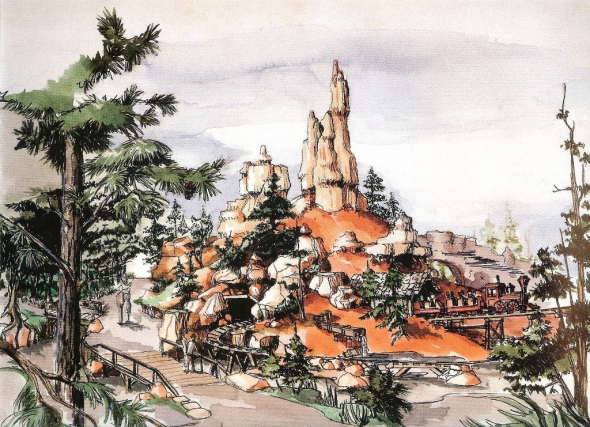
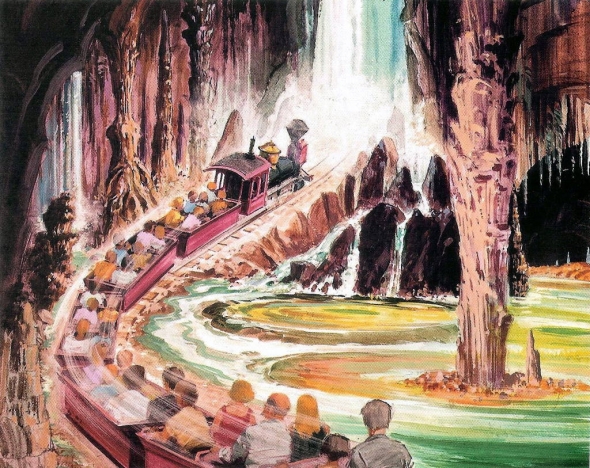
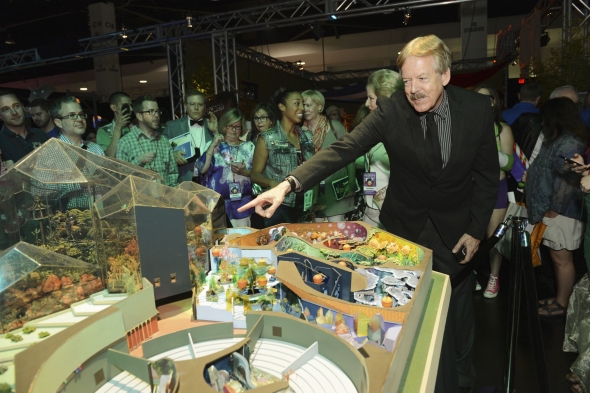
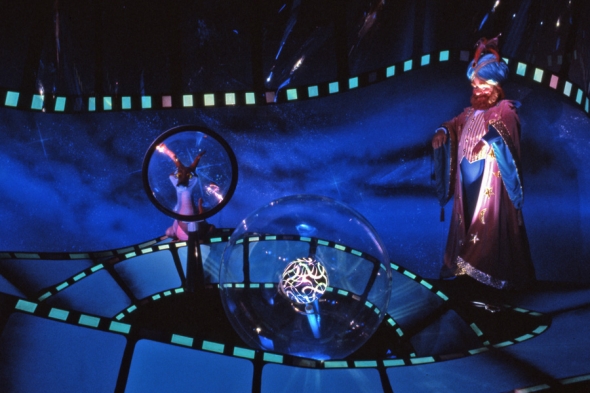
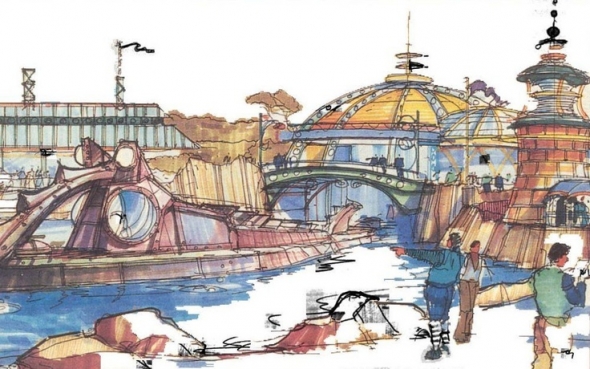
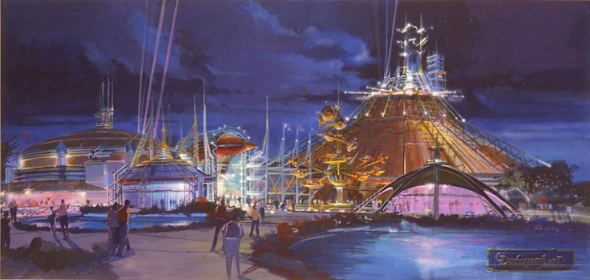
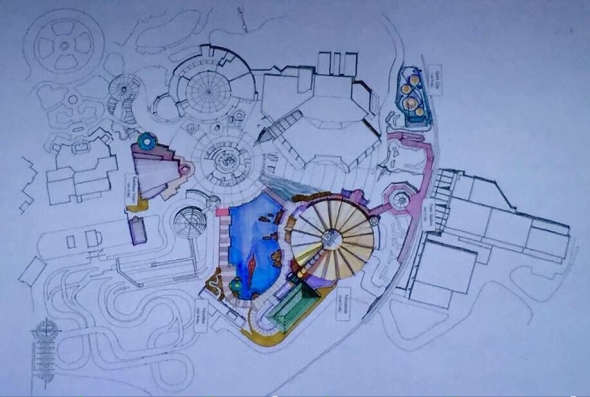
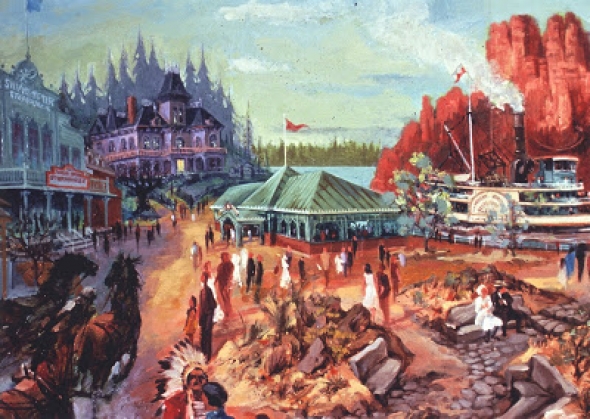
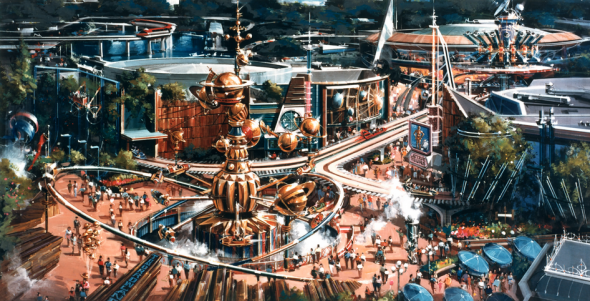
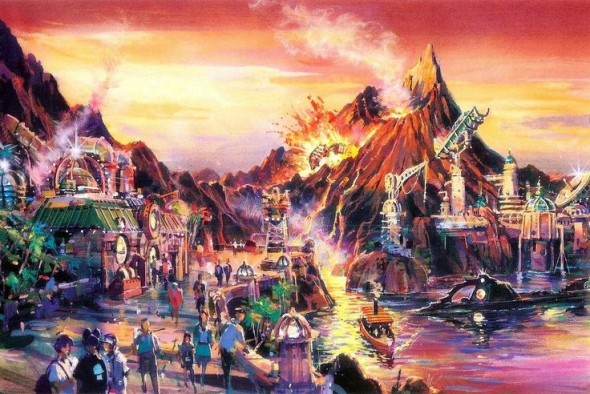
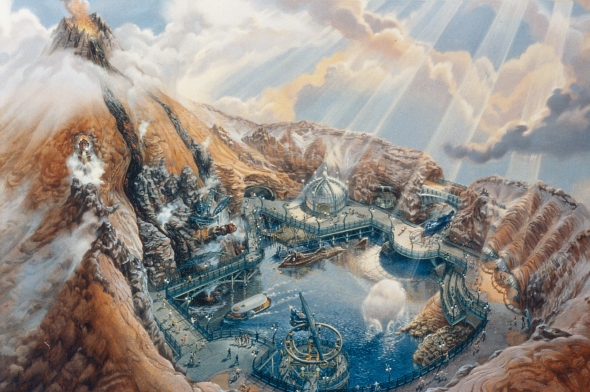
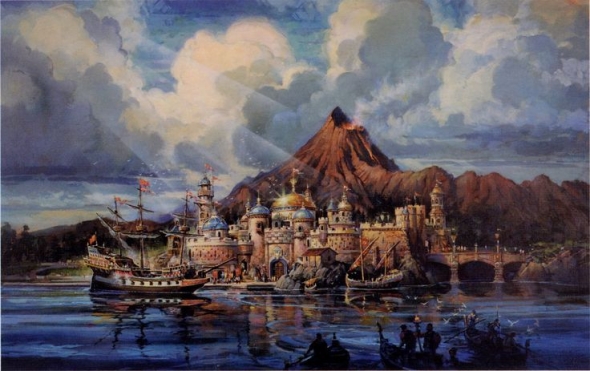
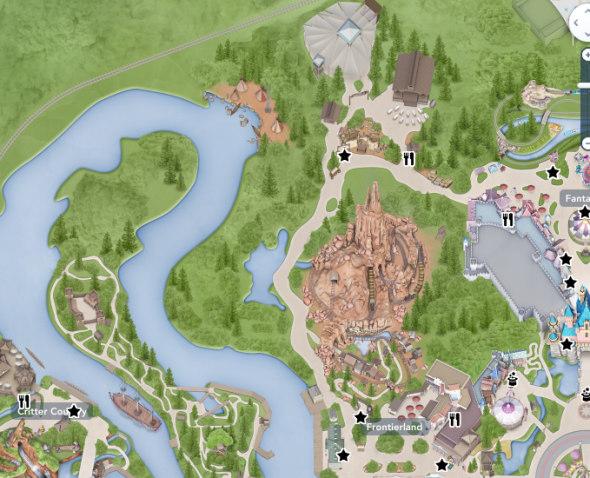
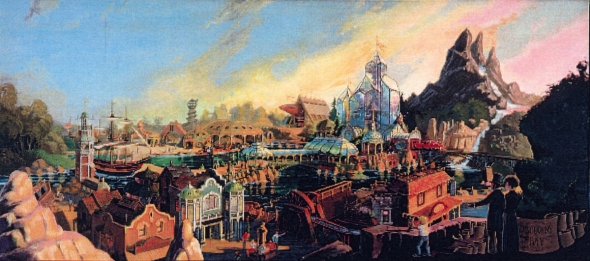

Comments
It would be a fantastic land to be added to the Disney Parks. The film "TomorrowLand" was an excellent film though I feel it had it's release dampened by its competition in the box office. It had Steampunk and Jules Verne elements tied with a theme of timeless optimism and development. Discoveryland could be just what the world needs, even if it doesn't know it.
I know that Claude Coats was his mentor, but this is the first I've heard of Marc acting as such. In those days, Davis people and Coats people stayed in separate camps.
Coats was definitely his mentor more than anyone else out the gate, but Baxter benefited from both schools of thought, it seems. When you think about it, most any successful and "classic" Disney ride has elements of both designers (and obviously many more), and Baxter seemed to have registered that and incorporated a balance between them into his creative process!
Sometimes, Tony's projects leaned more toward Davis' style! Think of his Phantom Manor, which more or less conceded the Haunted Mansion debate to Davis' character-driven favor. Other times, he took Davis'-style concepts and made them a bit more abstract, as in Paris' Pirates. But altogether I think he simply learned that their two styles are complimentary, not mutually exclusive. Which has been a tremendous benefit for us as guests!
Bravo, Brian!
This was such a well researched and thought out article, fascinating to read. It gave me a much deeper appreciation of Tony Baxter.
Looking forward to more of your work.
Thanks Chris! On my profile you'll find quite a bit more that I've written on lost concepts and closed attractions that you might find interesting! But I'm a huge fan of Tony Baxter and it's hard not to be. He's responsible for so many of the modern attractions we love, and for so many more that fans beg for.